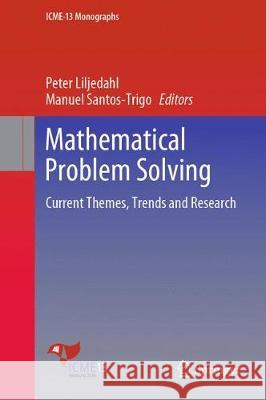Mathematical Problem Solving: Current Themes, Trends, and Research » książka
topmenu
Mathematical Problem Solving: Current Themes, Trends, and Research
ISBN-13: 9783030104719 / Angielski / Twarda / 2019 / 362 str.
Kategorie:
Kategorie BISAC:
Wydawca:
Springer
Seria wydawnicza:
Język:
Angielski
ISBN-13:
9783030104719
Rok wydania:
2019
Wydanie:
2019
Ilość stron:
362
Waga:
0.68 kg
Wymiary:
23.88 x 21.08 x 2.29
Oprawa:
Twarda
Wolumenów:
01











